Around 2007 or 2008, I was visiting some family friends with my parents. I forget exactly the date or the reason of the visit, but one of the kids there, maybe 4 or 5 years older than me, was playing a videogame on the computer. I clearly remember a blue character with wings, gliding through the air as he landed right besides a pretty ugly creature and stabbed it from the back, a bunch of blood spilled out, a green orb flew away from the dead enemy, and the blue character absorbed it for himself!
I thought it was some kind of Zelda at first, I had only seen another older friend playing that on his computer before. However, this felt much more mature, given the violence of it all. Both games looked incredible to my eyes.
At some point we moved to another city, and years passed. We visited those friends again, but it had been a while and, although I have a very faint memory of asking for the name of the game, and writing it down, I probably lost the note and forgot once more, and asking the same thing felt extremely ridiculous to me.
Despite it all, that blue character with an edgy haircut and an awesome shredded cowl stayed in my memory, and years later, it would finally return to me.
Back in the day when I was all in on the Miyoo Mini Plus, I was looking for some PS1 games to add to my SD card, and many of the greats like Final Fantasy VII, Parasite Eve and Metal Gear Solid showed up. Checking some lists online, I immediately recognized it: Soul Reaver. That was the game I had been looking for, that I had never known for more than a decade.
And then, just a few months later, the Remastered edition was announced, containing the first and second games, and I knew it was only a matter of time before I got it.
Earlier in the year in the TWG Discord community, the Low Key Gaming Club opened submissions for games to play in upcoming months, so I nominated it, and it was selected! The game was chosen for October, and I finally got to experience what I never could during my childhood.
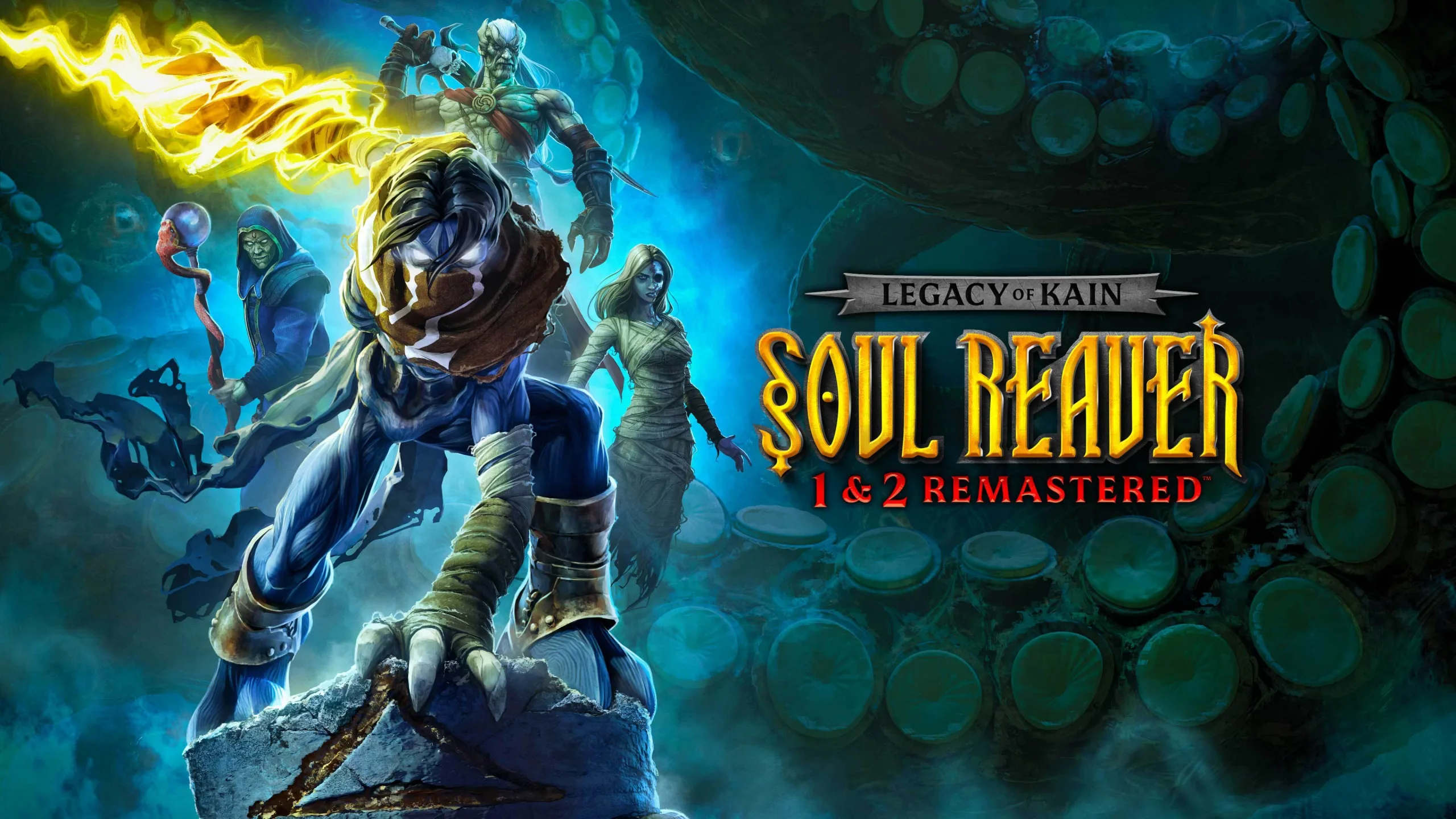
Story
The game happens in the land of Nosgoth, a regiond ruled by Kain and his brethren of vampires, with Raziel, the protagonist of the game, serving as second in command. However, as everyone awaits the evolution of Kain to a basically divine status—after a thousand years of ruling over Nosgoth—Raziel evolves first. He grew a pair of wings before his master, and for daring to do so, he’s thrown to the depths of the Underworld.
Burned, ravaged and disfigured, Raziel is waken up hundreds of years later by an Eldritch being, an ancient god who has chosen him to be the Soul Reaver, to fulfill a purpose, set in motion from the very beginning. As a Soul Reaver, Raziel now has the ability to absorb souls, and to traverse both the physical and the spiritual realm, which becomes a game mechanic used throughout the whole journey.
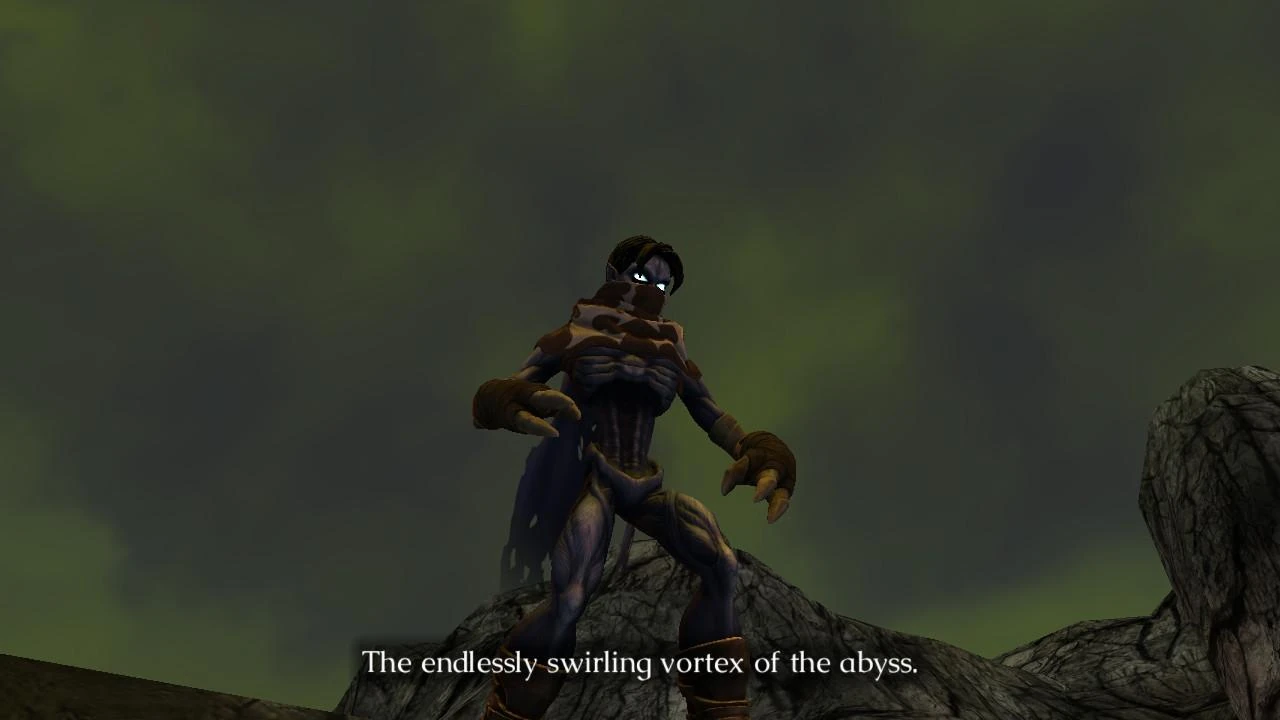
Raziel will discover a world in even worse condition than his own, abandoned, in decay, invaded by abominations descended from his own clan and his brothers’ as well. The whole region is filled to the brim with environmental storytelling, of endless war, desperate tactics and mutual destruction.
As the story continues, facing threat after threat and overcoming every obstacle and dungeon, Raziel will face against his fallen brothers, and Kain himself. Each of these duels begin with a dialogue that leaves place for plot twists, revelations, and arguments from each character that will let us understand motivations, relationships and the story of how things ended up like they did.
Soul Reaver is actually a sort of sequel for an earlier PS1 game: Legacy of Kain: Blood Omen, where Kain is the protagonist, thousands of years before. There is a lot of imagery and a couple of characters that are borrowed from the previous game, but given the timespan between the entries, the previous story itself may be considered a myth and history of its own, and it’s not really necessary to enjoy this. Most of it amounts to interesting references, some areas getting redesigned and changed by the time, and of course, Kain himself being the antagonist this time around, engulfed by a greed for power and dominance over everything.
Simply put, there is a lot of story to enjoy here, and you should check it out for yourself.
Gameplay
This game is a masterpiece of its time, wonderfully designed and overcoming many limitations that even PS2 games still struggled with, in very clever ways.
You are Raziel, on your quest to explore the land of Nosgoth and uncover the truth of what happened, after centuries of war and despair under Kain’s empire. The game revolves around one main mechanic, switching between the physical and spirit realm. You can go to the spirit realm anytime, but you can’t turn back to the material world unless you are on a special portal and at full health. You can perform a limited set of actions on each realm, and different enemies will spawn as well. You can also jump and hover around, using your broken wings to reach far away platforms.
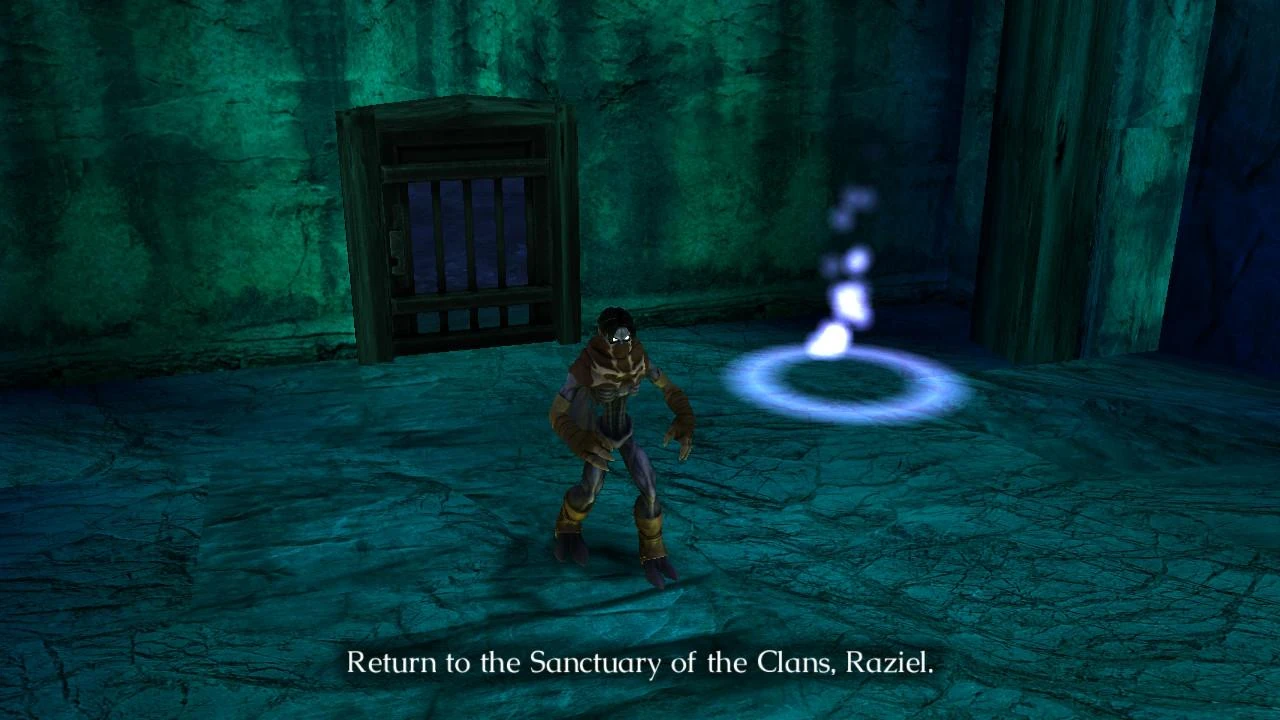
The physical realm and material realm also completely change the layout of the environment. If you are surprised at the “rotated” rooms in Ocarina of Time, this will blow your mind. They somehow seamlessly modify the polygons and textures of the game in subtle, but effective ways. Some platforms are unreachable in the physical realm, but get closer in the spirit realm—this must have been a completely mind-boggling effect on the PS1. Observation is key, use the camera controls.
The traversal mechanics are interesting too, other than regular platforming and moving around, you also have teleportation gates. These are one of the most impressive feats of the game. Modern Metroidvanias like Hollow Knight and The Lost Crown, have the same thing, however, only Soul Reaver pulls off seamless teleportation with no loading screens to be found, in fact. There are no loading screens anywhere—except when you boot the game. This is absolutely ridiculous for a title in the PS1, and yet it’s here. Not even Monster Hunter got this on the PS2.
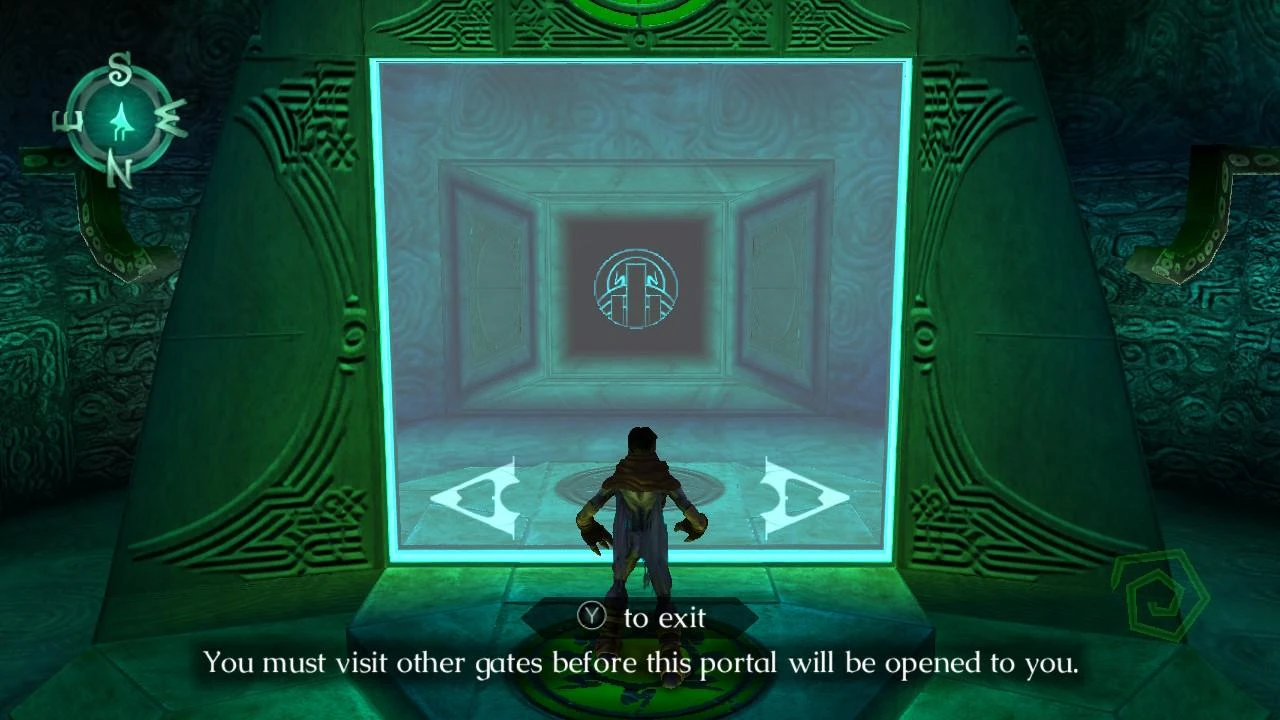
The combat in this game is rather simple, you can focus on an enemy and throw punches. There is no parrying or timing or combos. Most enemies are vampires who cannot die by regular means. You have to impale them with a weapon, throw them on fire, or in water, and absorb their soul afterwards. However, you can also just run past a lot of the enemies, or switch to the spirit realm, where enemy spirits can be beaten and absorbed. Eventually you will unlock a weapon that you can use while your health is full, but other than that, you are on your own, using the surroundings to defeat enemies.
Another mechanic of the game that is present from beginning to end, are block puzzles! which can also be found in some Zelda games. But don’t sleep on them. Some of the puzzle design here is equal to the most clever shrines in Breath of The Wild and the dungeons from Ocarina. I was in awe at how much my head was working to solve these, and once they click I felt like new neurons were growing in my brain.
You will unlock many other abilities later, that will allow you to pass different obstacles in the game, all of them interact with the mechanic of switching between realms and pushing blocks. For example, eventually you get the ability to go through walls—only in the spirit realm—which gives you access to some rooms, you will also gain the ability to move blocks at a distance—only in the material world—which expands the possibilities for puzzles. A couple more abilities are unlocked, which are implemented wonderfully in the dungeon design.
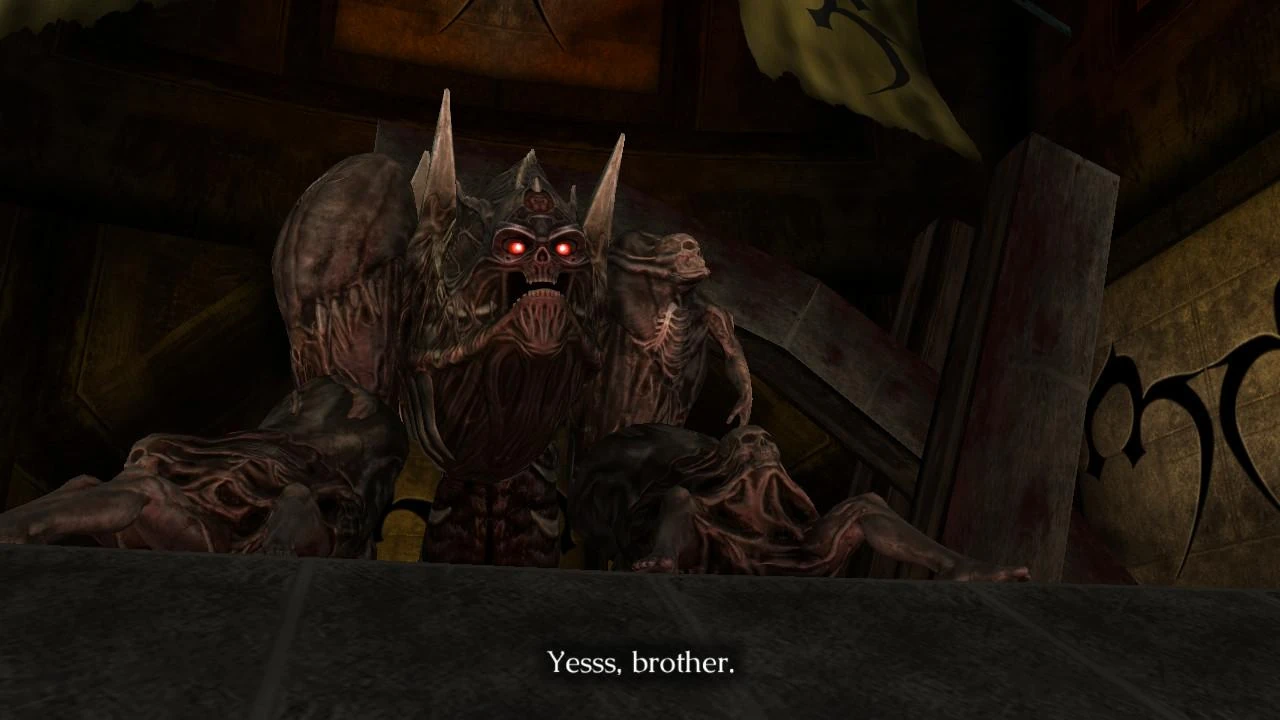
Here is another surprise, the boss fights are puzzles themselves. Even if the bosses look like something out of Dark Souls, you can’t kill them by throwing punches or hitting them with weapons—okay, a couple will need that. The boss and its environment are one. You will have to look at its behaviour and the surroundings to realize how you can beat them, and once you do, they are not that difficult, to be honest.
I’d say the gameplay here is fantastic. However, it is still and old game, everything here will be kinda janky and kinda clunky. Movement will be kinda slow and the camera will be kinda confusing. There’s also a water level, which is as great as any game at the time. Nothing unusual if you ever played Ocarina of Time.
Art & Music
If there is one thing where this game has not aged a day, it would be the art, especially the voice acting.
There is some incredible talent that worked on this game, some of which you may have heard in films and media of the time. The dialogue scenes, conversations between Raziel and his brothers, now enemies, a mysterious woman spectre that offers guidance, along the ancient deity that brought you back to the spirit realm, all of them possess an incredible gravitas and power to them.
I can’t say it enough, the conversations happening before every fight or when a new area is visited are just great, the animation, and the shots, while simple for today standards, work to convey the story and give a dramatic tone to every scene, it was a pretty cinematic experience overall rivaled only by Metal Gear Solid.
As I said before, the game features some incredible storytelling told through every environment. Even if the polygons are rather simple, The world of Nosgoth feels truly alive (or rather, dead?), it was pretty well represented and I found myself admiring the design of the areas and attention to detail. Even if some puzzle design is only serving the gameplay, I thought the contraptions were interesting and I truly wondered “what was the purpose of this when the place was not a wasteland”.
The textures of the PS1 graphics, while obviously low resolution, work amazingly to make this game stand out above the rest, managing to look like a PS2 title, especially when viewed through a CRT screen.
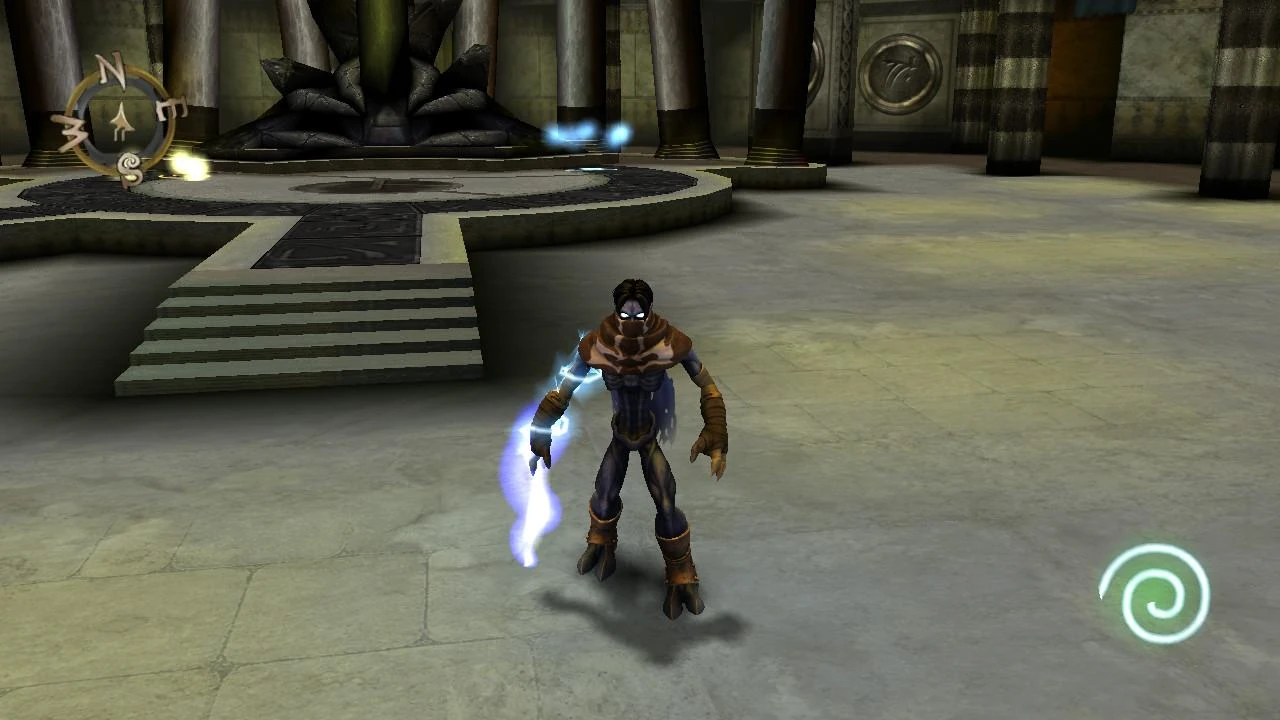
The Remastered version, which is what I played, features updated, high-res textures that add more detail and retain the original feel and vibes of the game. You can freely swap between original and updated graphics by pressing the R3 button (the analog stick), on the Switch version. I genuinely thought I was just looking at the game in the way it always looked to me as a kid.
While the texture work of the environments saw an uplift, the biggest change has to be the implementation of higher resolution 3D models. Pretty much every character in the game got a complete remodel with updated textures and a higher polygon count. All in all, it’s just fantastic to look at, although some of the models look a bit more bulky than the PS1 counterparts, which is a bit weird. I was genuinely suprised at the designs of the bosses, they wouldn’t feel out of place in a modern Soulslike.
The music of this game is excellent as well, it offers a vibe that no other soundtrack quite has, with a very environmental style to it, which feels like a mix between ambient sound, drums, strings, screams, and chants. I don’t know how to explain it, it just works. The music also adapts to whatever is going on screen, rising in tension when you get into combat, and going back to normal after a victory, without missing a beat. Just listen to it
Overall
Well, let’s just finish things off by listing the good and the bad this game has to offer!
The good
- Fantastic art, music, and voice acting.
- Deep lore and engaging story with great writing and scenes.
- A linear progression of the game.
- Fantastic puzzle, dungeon and boss battle design
- There are no unfair deaths or areas, other than platforming.
- No loading screen, seamless gameplay between realms and areas.
- Extra goodies if you return to previous areas with new powers!
- The game is short! And the Remaster comes with the sequel included.
The not so good
- Clunky, old school camera and movement controls
- Kinda slow walking speed and action animations.
- Platforming sections not aided by the camera and movement.
- The map in the Remaster is basically useless (there is no map in the original)
- Some areas may feel empty or confusing to traverse
- Enemies respawning in puzzle areas are annoying
- A couple of obscure puzzle mechanics (not many)
- The game ends in a cliff-hanger (just play with the sequel immediately though)
Some tips and reminders
- You can avoid most of the platforming struggle by crouching and walking at once, crouching won’t let you fall off platform borders.
- The Remaster has tooltips to know if you can interact with objects, this is apparently not a thing in the original so keep it in mind if you want to emulate.
- Keep using the camera view, it will save a lot of confusion, there is a lot of verticality in the puzzles, look up, down and behind you.
- If you see no path forward, try switching realms since the shape of many things will vary and open new options.
- Once you can shoot projectiles, you can also aim with the camera view.
- A couple puzzles will requires trial and error, it’s not complicated but it’s also not as logical as others.
- Keep looking at your surroundings, all the clues will be there—except for the trial and error puzzles.
Final thoughts
All in all, I absolutely loved this game. All of the “bad stuff” I mentioned barely affected me at all, I just point it out in case it might be an issue for you. I think this game and its world are just incredible, I really enjoyed it a lot.
Raziel is such an awesome character, and Nosgoth is a very unique setting, I really want to see what is next for the sequel and the series. It is such a shame there has been no new games in a while, I really hope someone greenlights more adventures with Kain and Raziel at some point.
I am definitely going to be playing the sequel to see how the story evolves, I have so many games in the backlog though, so we’ll see.
Backlinks
- October 2025 Summary on November 02, 2025













